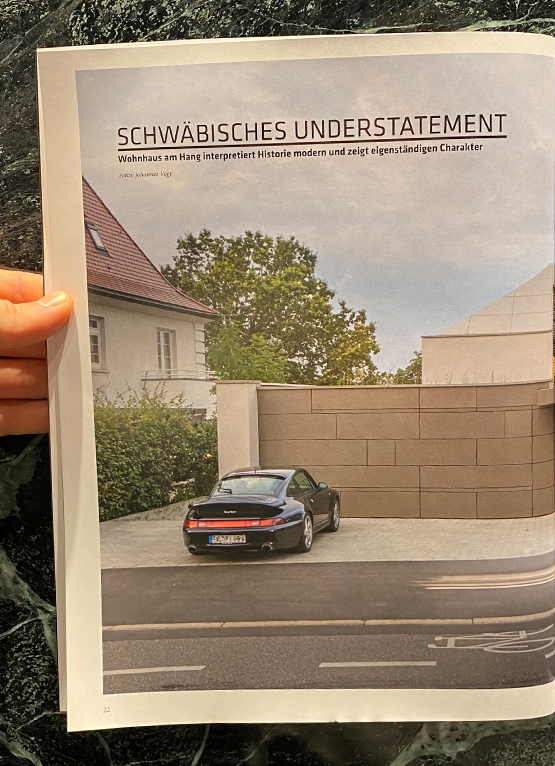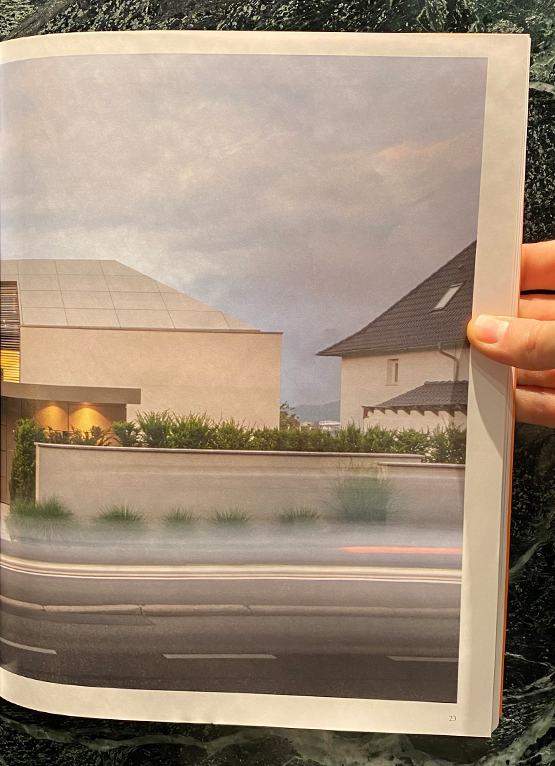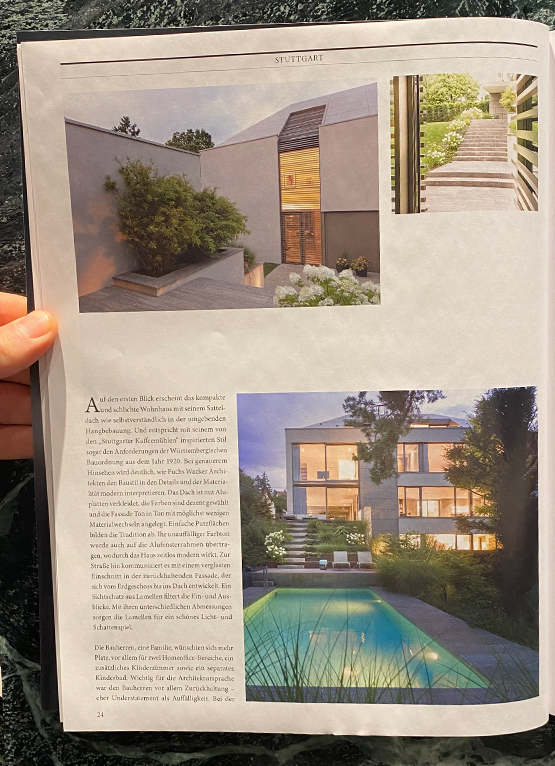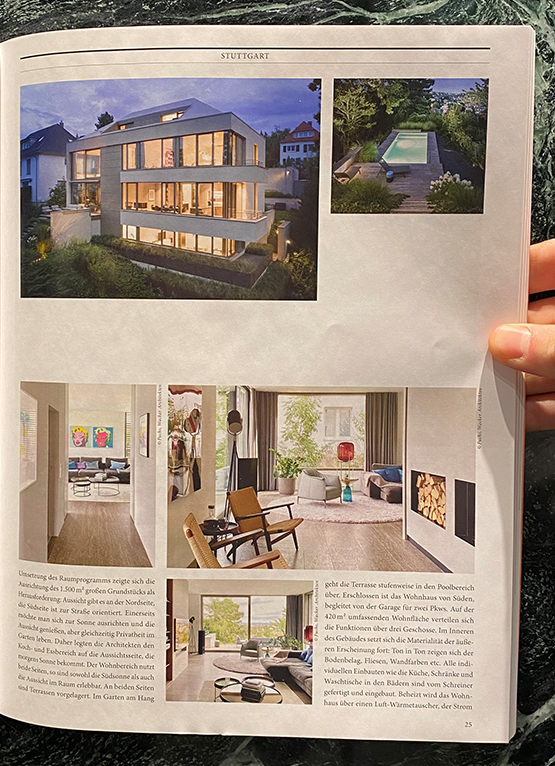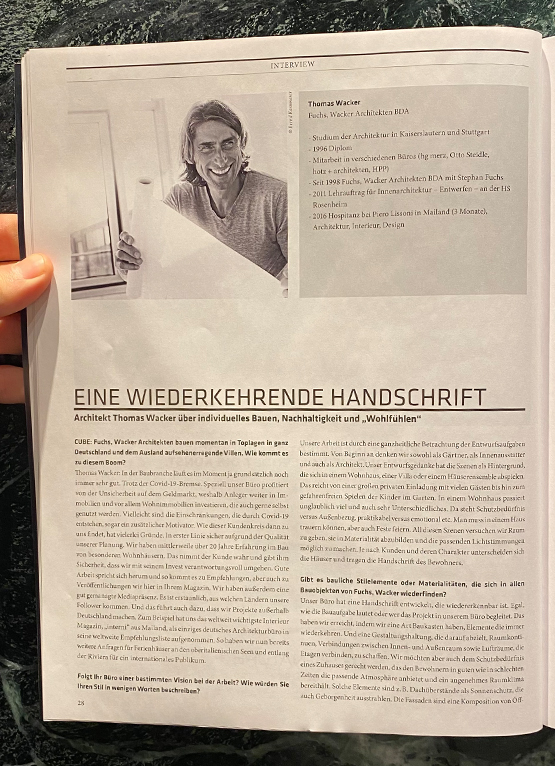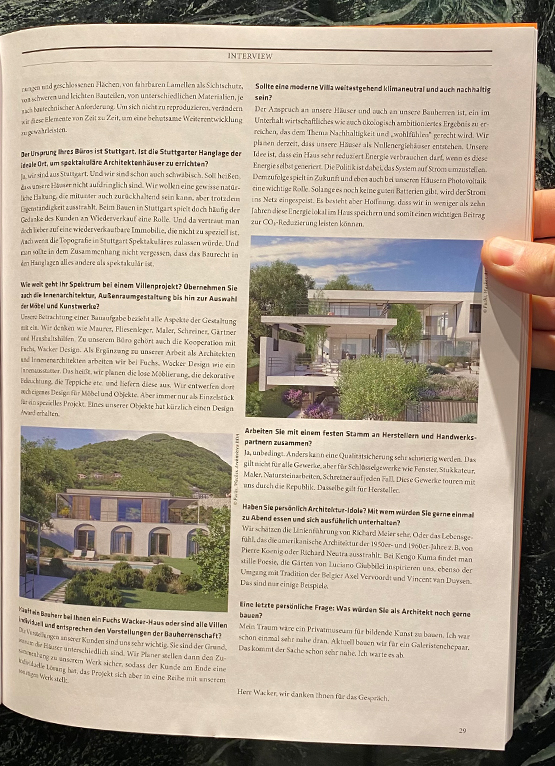Cube Magazine with Thomas Wacker in an interview
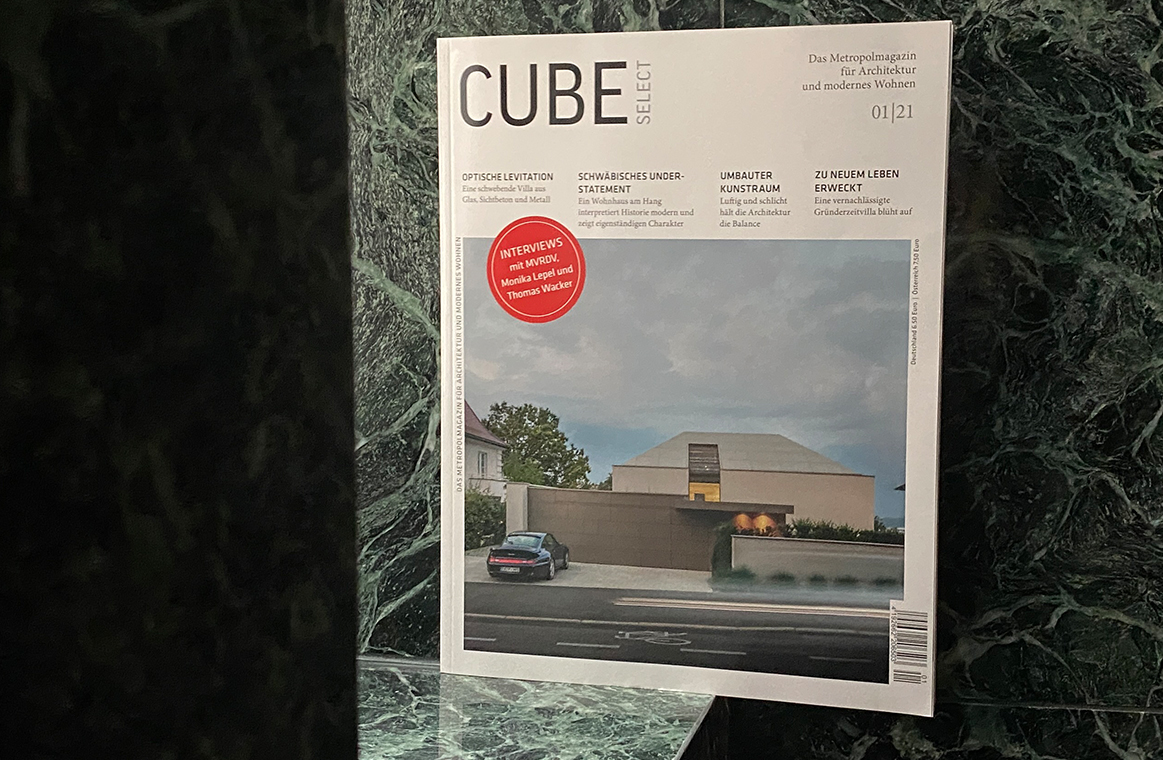
We are very pleased about the publication in the current issue of Cube Magazine Select 01|21 & Cube Magazine Stuttgart 04|20. You can read a great article about the ZEPP house in Stuttgart and a very interesting interview with Thomas Wacker.
INTERVIEW WITH THOMAS WACKER A RECURRENT HANDWRITING Architect Thomas Wacker on individual construction, sustainability and “feeling good”
CUBE: Fuchs, Wacker Architects are currently building sensational villas in prime locations throughout Germany and abroad. How does this boom come about? Thomas Wacker: Things are basically still going very well in the construction industry at the moment. Despite the Covid-19 brake. Our office in particular benefits from the uncertainty on the money market, which is why investors continue to invest in real estate and especially residential properties that people also like to use themselves. Perhaps the restrictions caused by Covid-19 are even an additional motivator. There are many reasons why this customer group finds us. First and foremost, certainly due to the quality of our planning. We now have over 20 years of experience in building special homes. The customer notices this and gives them security that we are handling their investment responsibly. Good work gets around and this leads to recommendations, but also to publications like this in your magazine. We also have a well-managed media presence. It's amazing which countries our followers come from. And that also means that we do projects outside of Germany. For example, the world's most important interior magazine, “interni” from Milan, was the only German architectural firm to include us in its worldwide list of recommendations. We now have further inquiries for holiday homes on the northern Italian lakes and along the Riviera for an international audience.
Does your office follow a specific vision at work? How would you describe your style in a few words? Our work is determined by a holistic view of the design tasks. From the very beginning we think as gardeners, as interior designers and as architects. Our design idea is based on the scenes that take place in a residential building, a villa or an ensemble of houses. This ranges from a large private invitation with many guests to the children playing in the garden without danger. An incredible amount and very different things happen in a residential building. There is a need for protection versus reference to the outside world, practical versus emotional, etc. You have to be able to mourn in a house, but you also have to be able to celebrate celebrations. We try to give all of these scenes space, depict them in materiality and make the right lighting moods possible. Depending on the customers and their character, the houses differ and bear the signature of the resident.
Are there structural stylistic elements or materials that can be found in all Fuchs, Wacker buildings? Our office has developed a handwriting that is recognizable. No matter what the construction task is or who is accompanying the project in our office. We achieved this by having a kind of modular system, elements that keep recurring. And a design attitude that aims to create spatial continuums, connections between indoor and outdoor spaces, and air spaces that connect floors. But we also want to meet the need for protection in a home that the residents in
offers the right atmosphere in both good and bad times and provides a pleasant indoor climate. Such elements are e.g. B. Roof overhangs as sun protection, which also radiate security. The facades are a composition of openings and closed surfaces, of movable slats as privacy screens, of heavy and light components, of different materials, depending on the structural requirements. In order not to reproduce, we change these elements from time to time to ensure careful further development.
The origin of your office is Stuttgart. Is Stuttgart's hillside location the ideal place to build spectacular architect-designed houses? Yes, we are from Stuttgart. And we are also Swabian. This means that our houses are not intrusive. We want a certain natural attitude that can sometimes be reserved, but still exudes independence. When building in Stuttgart, the customer's thought of resale often plays a role. And it's better to rely on a resellable property that isn't too special. Even if the topography in Stuttgart would allow for something spectacular. And in this context, one should not forget that building regulations on slopes are anything but spectacular.
How far does your spectrum extend in a villa project? Do you also take on the interior design and exterior design right through to the selection of furniture and works of art? Our consideration of a construction task includes all aspects of the design. We think like bricklayers, tilers, painters, carpenters, gardeners and household helpers. Our office also includes cooperation with Fuchs, Wacker Design. In addition to our work as architects and interior designers, we at Fuchs, Wacker Design work like an interior designer. This means that we plan the loose furnishings, the decorative lighting, the carpets, etc. and deliver them. We also create our own designs for furniture and objects there. But always only as a unique piece for a special project. One of our properties recently received a design award.
Does a builder buy a Fuchs Wacker house from you or are all villas individual and correspond to the client's ideas? The ideas of our customers are very important to us. They are the reason why the houses are different. We planners then ensure the connection to our work so that in the end the customer
has an individual solution, but the project is in line with our other work.
Should a modern villa be largely climate-neutral and also sustainable? The demand on our houses and also on our builders is to achieve an economically and ecologically ambitious result in terms of maintenance that does justice to the topic of sustainability and “feel good”. We are currently planning for our houses to be zero-energy houses. Our idea is that a house can use very little energy if it generates this energy itself. Politicians are in the process of converting the system to electricity. As a result, photovoltaics will play an important role in the future and also in our homes. As long as there are no good batteries available, the electricity will be fed into the grid. However, there is hope that in less than ten years we will be able to store this energy locally in the house and thus make an important contribution to reducing CO2.
Do you work with a permanent base of manufacturers and craft partners? Yes absolutely. Otherwise, quality assurance can become very difficult. This does not apply to all trades, but it definitely applies to key trades such as windows, plasterers, painters, natural stone work, carpenters. These trades tour with us through the Republic. The same applies to manufacturers.
Do you personally have any architectural idols? Who would you like to have dinner with and have a detailed chat with? We really appreciate Richard Meier's lines. Or the attitude to life that American architecture of the 1950s and 1960s, for example. B. by Pierre Koenig or Richard Neutra. At Kengo Kuma you find quiet poetry, the gardens of Luciano Giubbilei inspire us, as does the approach to tradition of the Belgians Axel Vervoordt and Vincent van Duysen. These are just a few examples.
One last personal question: What else would you like to build as an architect? My dream would be to build a private museum for fine art. I've been very close before. We are currently building for a gallery owner couple. This is very close to the point. I'll wait and see.
Mr. Wacker, thank you for the interview.
